What is the Pitch Accent?
Japanese is a pitch-accented language. The pitch accent is a phonological feature that plays an important role in the pronunciation and meaning of words. It refers to the patterns of pitch or intonation used in spoken Japanese.
In Japanese, the pitch accent can distinguish between different words that have the same sequence of sounds but differ in meaning. It is similar to stress accent in English, where certain syllables within a word are pronounced with higher pitch or stress.
However, unlike stress accent in English, which is characterised by a prominence on certain syllables, Japanese pitch accent is characterised by a rise or fall in pitch.
There are two main types of pitch accent patterns in Japanese: the up-step pattern and the down-step pattern. In the up-step pattern, the pitch rises from a low to high pitch on the accented mora. In the down-step pattern, the pitch drops from a high to low pitch on the accented mora.
Japanese pitch accent varies by dialect and regional variations, but standard Japanese, often known as Tokyo dialect, is typically used as the reference. In standard Japanese, there are four basic pitch accent patterns.
- 平板 (Heiban) Flat
- 頭高 (Atama-daka) Head-high
- 中高 (Naka-daka) Middle-high
- 尾高 (O-daka) Tale-high
Let’s talk about “Mora”
Japanese uses slight differences in pitch (“high” and “low” pitches) to distinguish words and convey sentence structure. This differs from stress-accented languages such as English.
English is not a rhythmic or timed language, and the sounds that make up a word are called “syllables.” The standard “unit” of sound is the syllable, as the sounds that make up a word vary in length.
However, Japanese is a rhythmic language (like clapping in time with the beat) and each successive sound has the same length, so the standard unit of sound is the “mora.”
This rhythmic consistency sometimes misleads people into thinking that Japanese is a “flat language,” but this is not the case.
It is important to note that pitch accent can vary depending on the surrounding words or context, and if it is not accurately pronounced in speech, it will sound unnatural.
In addition, the same sound in several words may have different pitches, and poor pitch can make it difficult to understand. For example, “はし /hashi/” can be “edge,” “bridge” or “chopsticks.” The first one is Heiban, the second one is O-daka, and the latter is Atama-daka.
平板

春になって、日が長くなりました。Spring has arrived and the days are getting longer.
この道をまっすぐ行ってください。Go straight down this road.
今、時間がありません。I don’t have time now.
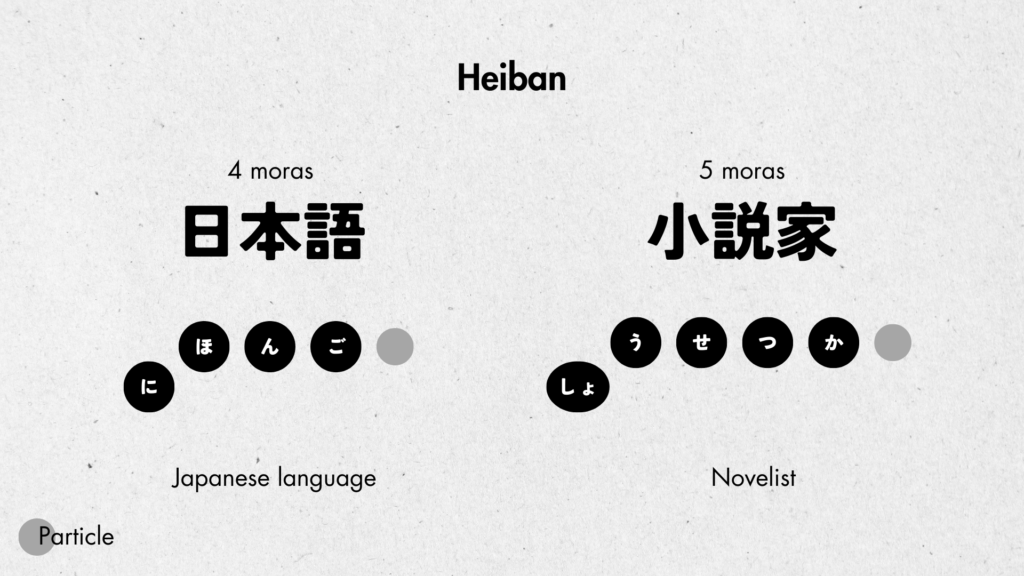
日本語が話せます。I can speak Japanese.
将来、小説家になりたいです。I want to be a novelist in the future.
頭高
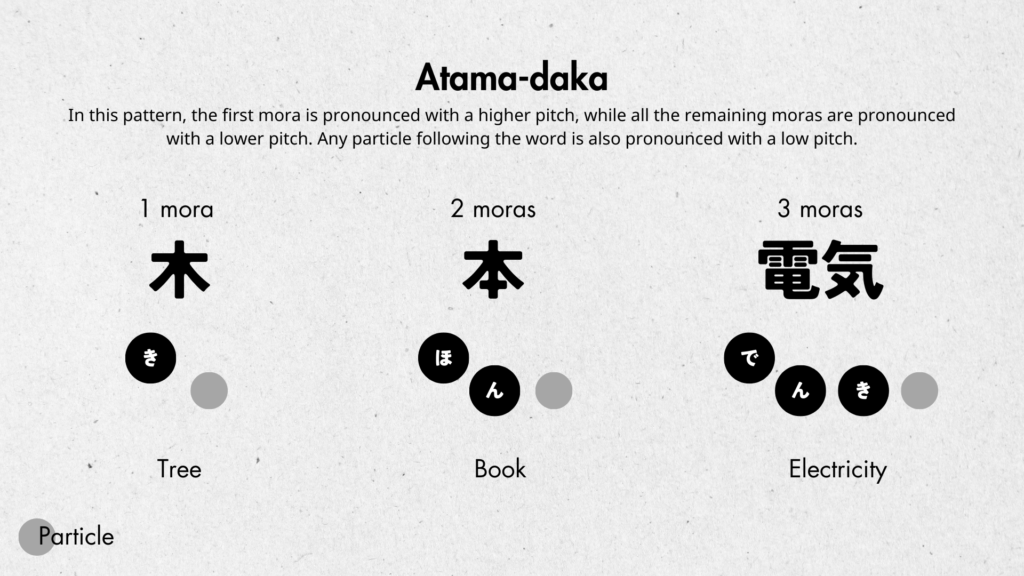
庭にたくさん木があります。There are a lot of trees in the garden.
本を読むのが好きです。I like to read books.
電気を消してください。Please turn off the light.

新しいジーンズを買いました。I bought a new pair of jeans.
金閣寺に行ったことがありますか? Have you been to Kinkaku-ji?
中高
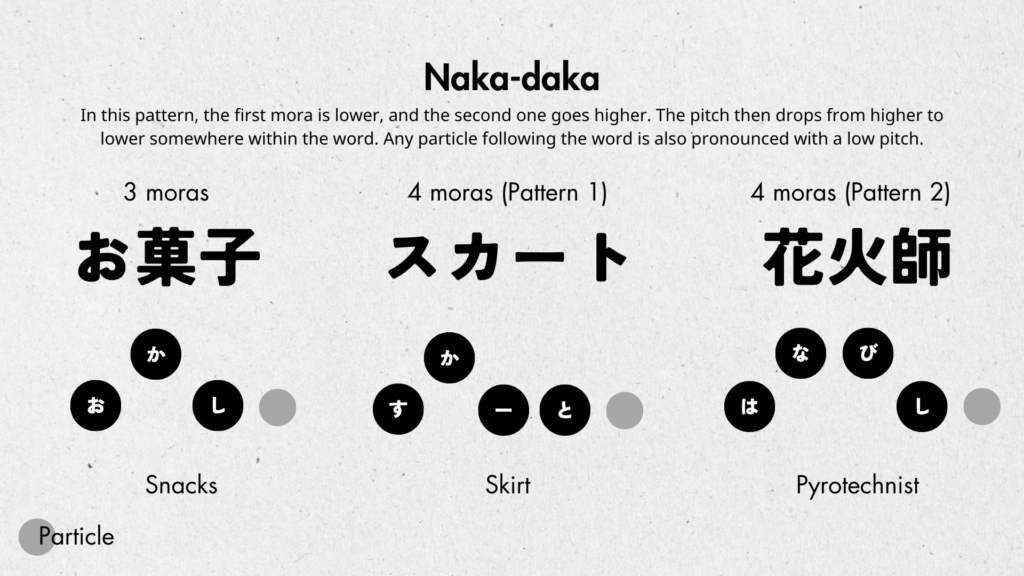
お菓子が食べたいです。I want to eat snacks.
今日はスカートを履いています。I am wearing a skirt today.
将来、花火師になりたいです。I would like to become a pyrotechnist in the future.

昨日、美容院に行きました。I went to the hairdresser yesterday.
月曜日にテストがあります。There will be an exam on Monday.
小型バスに乗って観光しました。I went sightseeing in a small bus.
尾高
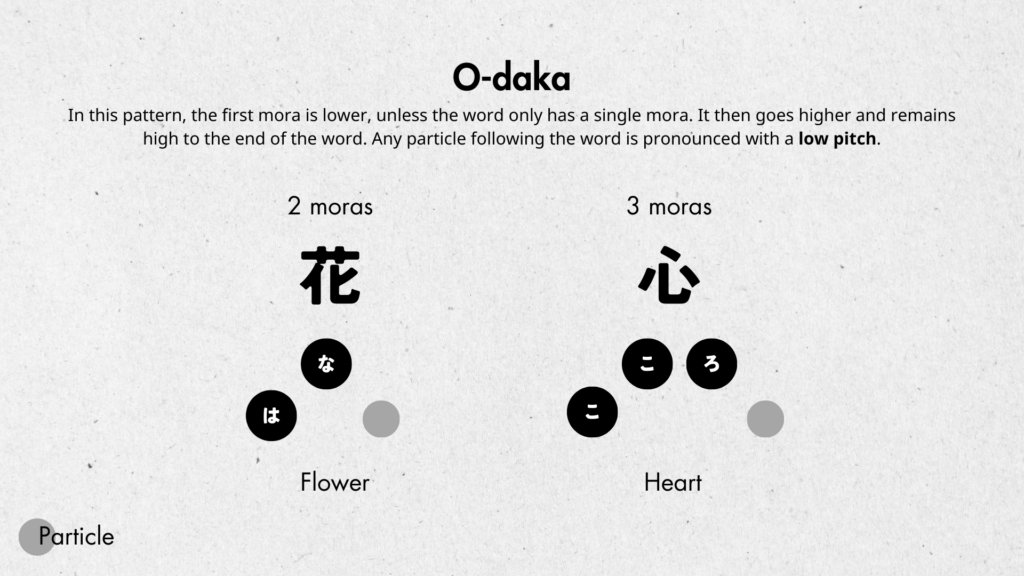
綺麗な花が咲いています。Beautiful flowers are in bloom.
その映画を観て、心が動かされました。I was moved by that film.
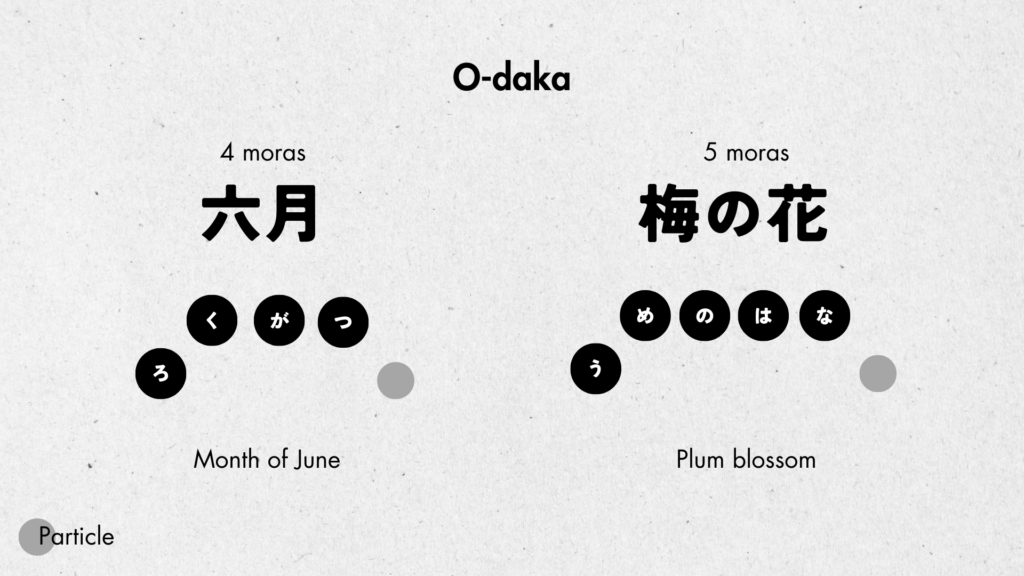
私は六月に生まれました。I was born in June.
二月になって、梅の花が咲き始めました。Since February started the plum blossoms have started to bloom.



コメント